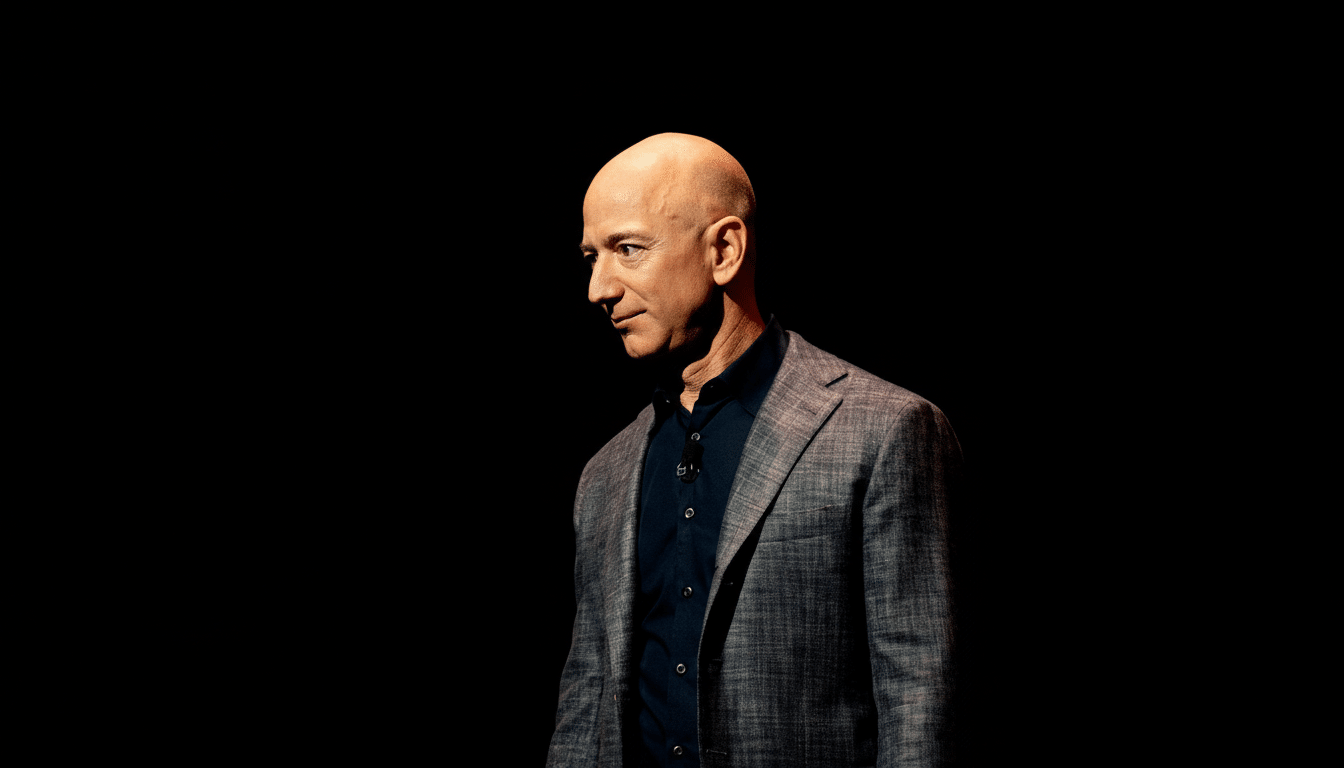Jeff Bezos is getting back into the day-to-day with a capital-D Day One: Per the New York Times, he’ll step back into operations as co-CEO of an ambitious new artificial intelligence venture called Project Prometheus. The startup has already undertaken a staggering $6.2 billion in investments and is aiming for “AI for the physical economy,” setting itself at the apex of advanced modeling, industrial engineering, and large-scale production.
Bezos will split the top job with Vik Bajaj, a seasoned operator who helped launch Google’s life sciences efforts and co-founded Verily, which he ran for two years before most recently co-founding Foresite Labs. The company has so far recruited almost 100 employees, including researchers who have worked at Meta, OpenAI, and Google DeepMind, the report said. Amazon and Bajaj declined to comment on the effort.

What Project Prometheus Targets in the Industrial World
Prometheus wants to create AI systems that enhance the way physical products are designed, simulated, and made—across fields such as aerospace, automotive, and computing hardware. Think digital twins at industrial scale, physics-informed neural networks that can accelerate materials discovery, and generative design tools that optimize parts for cost, weight, and performance before a single prototype is made.
The approach mirrors the work of a number of labs building simulation-first platforms—teams like Periodic Labs—and dovetails with the larger industrial push toward virtual validation. The World Bank estimates that manufacturing accounts for around 16% of global GDP; McKinsey expects that generative AI could unlock between $3.5 and $4.4 trillion in annual productivity gains—much of it in areas such as engineering, supply chains, and operations—across the economy to be opened up by generative AI.
Why Bezos Reentering the Arena Matters for AI
Bezos’s operational return is also a bet that the next shift for AI platforms will occur in something more concrete than chatbot functionality or search. His history—transforming Amazon into a logistics and cloud juggernaut, investing in large-scale robotics and automation, and institutionalizing customer-obsessed execution—would seem to map naturally onto the messy, multi-year travails of industrial reinvention.
It also brings intriguing new questions about the way nature functions at the level of ecosystems. Anthropic counts Amazon as a major investor, and AWS serves as the compute backbone for many AI labs. If Prometheus is constructing heavy-duty models for engineering workflows, it might just be one anchor customer in a world with many of them driving industrialized SaaS atop hyperscale infrastructure.
Scale of Funding and Compute Ambitions at Prometheus
A war chest of $6.2 billion immediately puts Prometheus in the ranks of the best-funded AI companies, alongside xAI and Anthropic. Crucially, the capital requirements for “AI meets physics” are prohibitive: state-of-the-art training runs typically require tens of thousands of GPUs, specialized networks connecting them, and bespoke data pipelines to mix computer-aided design files, sensor readings, lab measurements, and maintenance schedules.
Industry estimates indicate that a 10,000-GPU cluster of today’s accelerators can easily cost upwards of hundreds of millions of dollars when elements like networking, data center buildout, and power are accounted for—before any training and inference costs.

A budget like this allows Prometheus to have the flexibility to buy up rare compute, draw in top researchers, and iterate on proprietary data sets known for being hard (or costly) to come by in industrial settings.
Co-CEO Structure and Execution Risks at Prometheus
Running a company with co-chief executives is unusual, but not unprecedented. Both Salesforce and Netflix have experimented with iterations of the model, with results that reflect the clarity of roles, responsibilities, and cultural fit. With Bezos and Bajaj, the separation could be additive—operator-builder with a domain expert—as long as they keep product priorities and go-to-market clear.
The greater barriers lie beyond the org chart.
One such is culture, which is impervious to a lockdown, but it can be whipped into an almost un-Shakespearean fury by one. The requirements for industrial AI are that it has verifiable accuracy, is auditable, and is robust in the real world. In fields like aerospace and automotive, for example, design changes set off waves of change in safety certifications, supply chains, and regulatory regimes. Prometheus’s deployment playbook is likely to be overshadowed by NIST’s AI Risk Management Framework and title-specific standards.
Strategic Context and Competitive Landscape
Established incumbents are already pursuing similar ground. Nvidia is steering Omniverse into industrial simulation and digital twins; Siemens, PTC, and Dassault Systèmes are weaving AI through the engineering stack; Alphabet has sown elements like Isomorphic Labs in other science-heavy fields. The Prometheus differentiator will come down to whether it integrates state-of-the-art foundation models with domain-tailored physics and data, and partnerships sufficiently tight for step changes in cost, time-to-market, and quality.
If Prometheus can, for example, slash physical prototyping cycles from months to weeks, cut scrap rates by double digits, increase battery and materials performance through simulation-driven design, etc., it would create real ROI potential for manufacturers. Results like that turn pilots into platform commitments, and platform commitments into defensible moats.
The Bottom Line on Bezos and Project Prometheus
With Bezos back to hands-on leadership, along with deep capital and a life sciences veteran technologist already on staff, Project Prometheus is among the most closely watched AI plays in industry. The goal is clear: Translate frontier AI into safer, faster, and cheaper ways to build the physical world. The open question is execution—translating elite talent and ample compute into trusted systems that engineers and regulators at scale will sign off on.

